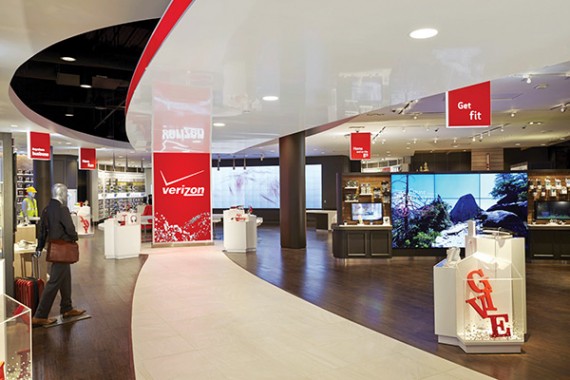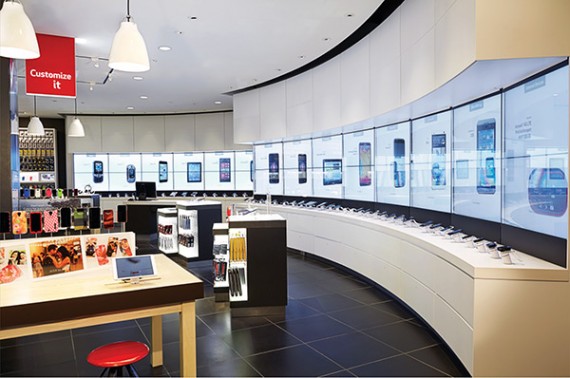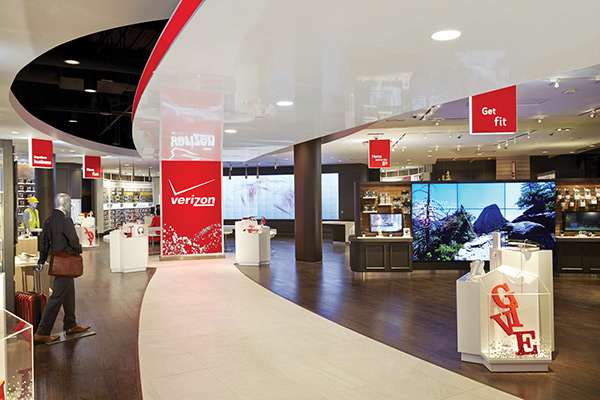
Verizon Push In-Store Boundaries
Verizon Wireless is turning up the wow factor in stores and malls around the US, from its two-storey flagship store in Chicago to the Mall of America in Minneapolis, to Houston, Santa Monica, and Boston.
One of the first video features customers see when entering the stores is the ‘Brand Focal’, a video column consisting of over 100 Christie MicroTiles. The feature sits at end of the entrance walkway and displays the Verizon logo on a dynamic, animated background that interacts with shoppers using the motion tracking technology of Microsoft Kinect.
Further into the store, shoppers can explore features of various phones and service plans on the Product Wall, a long video wall 14 displays wide by two high. Touch overlays are applied to the bottom screens in each column. As customers interact with the touchscreens, video content updates on both screens in the column, forming a single image. The interactive content is designed to make the entire product wall look like one seamless image, though it is actually 14 different interactive elements side by side.
A couple of video wall features display larger than life content to immerse customers in the story. One of these features is a 3×3 video wall in front of a treadmill where shoppers can walk or run through various environments and try out different wearable sports accessories and fitness gadgets.
All the video content is managed and controlled by Medialon hardware and software, specified by the systems integrator McCann Systems.
Verizon also has test site in Hilliard, Ohio to try out new technology and media content before it ever goes in front of customers. Stephen Keppler, Vice President and Senior Sales Executive with McCann Systems says, “The Ohio test site is the proving ground, so to speak, for Verizon. Any of the technology and all content must run in the Ohio lab prior to implementation in a store.” The Medialon systems in each store communicate with the Medialon system at the test site in Ohio, where equipment status can be monitored and technicians can remotely troubleshoot issues.
“Every store’s IP address range is exactly the same, and we use NAT (Network Address Translation) if we need to manage devices remotely,” says Navarro. This allows McCann to design the drawings, paperwork, and programming for one store and deploy the design in many locations with minimal adjustments to the documentation and programming, keeping the systems consistent and easy to troubleshoot remotely.

Interactive Controls (Medialon): (02) 9436 3022 or interactivecontrols.com.au
Christie Digital: www.christiedigital.com

